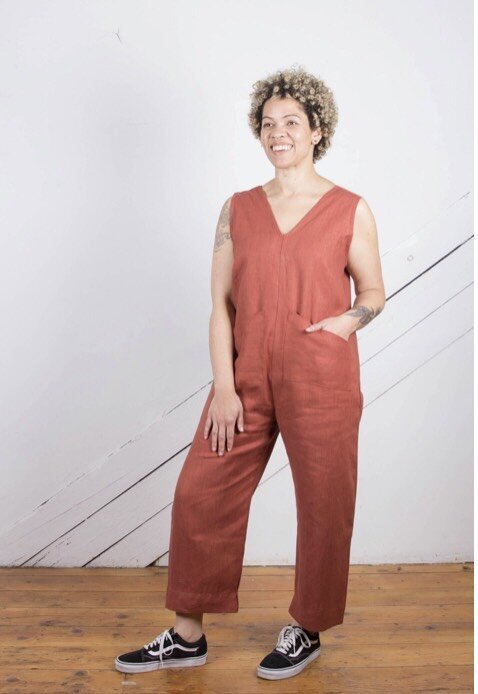PART 1: Your Texture Should Never Be Prohibitive: With Curly Expert Kia Fay
By Chelsea Woody
PART 1:
Kia, we are so happy to interview you! We really admire your work, and of course I am one of your clients. It’s really hard for us to find a hairstylist that aligns with our vision of being naturalistas and also active women of color in the outdoors, embracing the ocean, water, wind and rain. Tell us a bit about you and your philosophy on hair and your craft.
I came to hairdressing in a bit of a round about way. Having worked in mostly corporate spaces I always was sort of singled out professionally and personally for the way my hair naturally grew out of my head. I felt like that was an odd thing because my hair is core to who I am and unchanging. Right? So when I moved to San Jose, California it was time to find a new salon or new place to get my hair done... It seemed kind of bananas that there was no one doing this work. I sometimes joke that my career was born of stubbornness. If nobody was going to do it, I was willing to give it a try.
When I went back to school I wanted to learn how the beauty industry was structured and that was even further revealing. I was shocked to find that the curriculum did not include us. Even today it hasn’t changed, and effectively the portion on textured hair is the shortest section and essentially describes how to get rid of it.
Wow that is so disappointing. It is a struggle that a lot of us with textured hair face. What do you tell you clients who live an active lifestyle? I know this is not only my experience but many times when we go to the hairdresser we are told ‘now don’t get your hair wet, avoid water, try not to move when you sleep’. How do you educate clients?
Absolutely, at its core our hair should never be prohibitive is my belief. It is beautiful and should be cared for like any other part of our body but also it is just a fabric. It should not prevent us from doing anything as it relates to our level of activity. There is a very clear path to achieving easy, functional hair that enhances one's beauty rather than absorbing time and giving us a poor return on investment, we have stuff to do!
How does the hair industry evolve?
I think that shifting the educational narrative is the first place. It has to be a part of the mandatory curriculum if the majority of the global population does not have straight hair. It is incredibly antiquated to continually omit that information. Hopefully there will be a lot of advancements not only in terms of education but also products that will allow for more freedom on the part of clients as it relates to their hair care. Products that are more effective and will allow for more time to be spent pursuing interests rather than carve out large swaths of time to maintain certain styles.
Image by Kat Carney
What is the curly cut technique?
One of hair’s strengths is its variability. For the most part I do start with dry haircuts. I ask my clients to arrive with their hair in its natural state. That means de-tangled, and with little product styling and manipulation, that allows me to see where their curls would choose to exist, if given their free opportunity.
What are red flags we can tell our readers to look out for when you’re getting your textured hair cut?
First big red flag is folks not having a portfolio. If somebody is truly an expert at anything, they should have a concrete body of work that potential clients can pull from. The next big red flag is if anyone ever gives you hard time for your natural texture. What it effectively means is that the stylist is unfamiliar how to execute what you are looking for. You should also feel free to ask questions about a stylists training and philosophy. Lastly, if they don’t have products designed for textured hair, walk out!
How often should curly ladies get their hair cut? There tends to be an obsession with length but does it always mean healthy hair? There is often trauma associated with haircuts in our community.
On average most people I work with get their haircut once a quarter. This depends on a few different factors that are related to how much the hair is manipulated. If they are incredibly active or doing alternative styles that do not let their natural texture to be left out and breathe they may need more frequent trims.
Folks get so obsessed with length retention, and sadly the health of their hair goes by the wayside. We need to look at the least healthy part of the hair as our benchmark. As a team, you need to discuss what you are comfortable saying goodbye to, in order to achieve your healthy hair end game.
With the new release of Disney’s movie Little Mermaid coming out and I want to talk about this a stereotype of length of hair equaling beauty. How do we get passed that?
If we are real, media representation is the most widespread medium. By continually seeking to normalize that which is already normal through avenues like casting in print and digital media; and making sure that we increase our numbers of trained stylists in the industry so they can serve these people that are our guideposts culturally. That is going to do a lot to shift the narrative. We are fighting against a lot of programming that long straight hair is the ideal, and that anything that deviates from what is undesirable. By living freely and existing joyfully, that to me is the best way in our own daily lives to provide concrete examples to our community. Wearing your hair however you feel most comfortable, whether that be long or short or somewhere in between, I hope that over the course of time we stop looking at length as goals.
There is this push in social media with natural hair that is great , but it can also be a place that breeds comparison. There are so many influencers and folks pushing products on you that may not have the same hair type etc. How do you feel about that, and do you educate on different hair types?
There is a degree of colorism involved that creates a hierarchy. I think it’s really important to address [hair type] so that folks can have realistic expectations for their own hair. I like to teach clients how to analyze photos that they see, for example, zooming in on the photo of folks you are idealizing and asking yourself “Does my hair look anything like this?” Encouraging clients to see what these influencers hair looks like when it’s dry and wet!
Right! There is this illusion that if you do have textured hair that our curls are always perfectly uniform and always upright, large and big!
Our hair exists in different states and it can almost appear to be different material!


